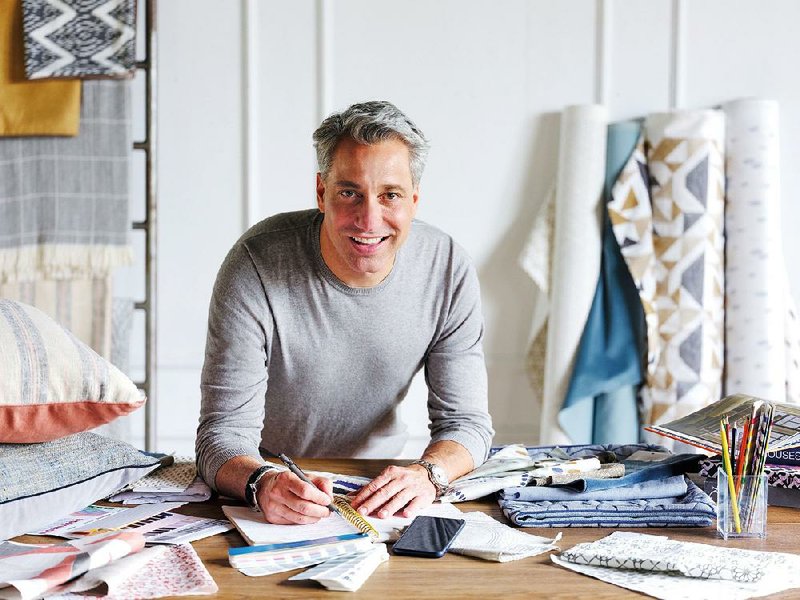"Are you OK?" My husband asks, coming into the family room worried, as he should be. I am doubled over crying with laughter, holding my ribs. I can barely breathe let alone explain.
What started as simple research for a column turned into a binge watch of Queer Eye For the Straight Guy, the Bravo reality TV show that won an Emmy, and that ran from 2003 to 2007. In case you missed it, as I did, in each episode five gay men descend upon a straight guy in dire need of a "make-better." The Fab 5 help the frump upgrade his hygiene, wardrobe, culinary skills, culture meter, and digs -- all in one day. Could someone please start a business doing this?
The show's interior design expert Thom Filicia had the heaviest lift. He is why I tuned in -- over a decade late. I was intrigued that the same guy who transforms bachelor hovels also serves an A-list clientele.
What's more, he has a knack for saying on air what we viewers are thinking: OK this room looks like a pinata got run over by a truck. The look I would describe as prisonlike. First, we get rid of the blow-up hot tub. There's minimal and then there's bleak. I want color to be a part of your life in a way that won't make your eyes bleed.
However entertaining the series is, and it is, to me Queer Eye's strength is that it reminds us of the power of perspective. We all stop seeing ourselves and our homes honestly, and can benefit from outside experts who have good taste and a keen eye to help us see what we don't. (Here, I pause to thank my frank hairdresser and forthright daughters, who never hold back.)
As Filicia celebrates his design firm's 20th year, he took my call and offered up some perspectives from which we all can benefit. Here are some outtakes of our conversation:
Marni: How do the interiors you create for clients and the ones for reality TV relate?
Thom: "My clients can afford antiques and custom furniture, and that is really wonderful, but working in media lets me bridge what I do in my design firm into everyday homes.
M: Do you have a design philosophy?
T: Whether fashion or food or interiors, all design happens on levels -- high, medium, low. I like an organic mix of all those. I love the idea of having the rare and refined along with the everyday to create a living environment that's not too precious. That is how people want to live, eat, dress and travel. Good design is not all about one layer.
M: You are known for your ability to see what others don't. What are the most common blind spots people have in home design?
T: Most people don't see what's really great in what they already have. They don't realize that their style is right in front of them. It might be in something they inherited or found, or otherwise emotionally connect to. That should be their springboard. Instead, they turn to magazines and showrooms. While those are great places to get new ideas, it's more important to look in front of you to see who you are and build on that. Creating your home is not about throwing everything away and starting over.
M: Let's pretend you have been crowned king of beautiful home interiors, and you get to lay down the rules. Give me your top do and don't?
T: Do invest in the anchor pieces of each room: the master bed, the dining table, the sofa. These are your long-term strategy pieces, and you want good quality and great design that can last a lifetime. You can spend less on the supporting pieces, like table lamps and end tables. Those pieces come, go and evolve. Don't try to live a lifestyle you think you want or should love. Be authentic.
M: You obviously bridge the worlds of fashion and home decor. What tips can the rest of us take from fashion and apply at home?
T: Fashion is a good starting point when talking about accessorizing. You would never wear all your jewelry at once, so don't put all your accessories out at once. Editing is as important as decorating.
M: Do you have a signature touch?
T: I like to think my interiors have all the attributes you want in a best friend: down to Earth, stylish, fun, interesting, approachable, and unpretentious yet sophisticated.
M: What's your home like?
T: My New York apartment is a glass box in a West Side high rise, with floor to ceiling windows. It's modern, has lots of art, and is a great place to entertain. I also have a house in the Finger Lakes area. Built in 1917, it's a fresh take on a traditional lake house. They are two very different environments. They tell my story.
M: What are you proudest of?
T: My team. I have a group of 20 people I enjoy working with. Designers aren't trained to build businesses or manage people, so I consider myself fortunate to have this talented team. The older I get [he's 50], the more important it is to be around grounded people.
Syndicated columnist Marni Jameson is the author of five home and lifestyle books, including Downsizing the Family Home -- What to Save, What to Let Go
HomeStyle on 07/06/2019
